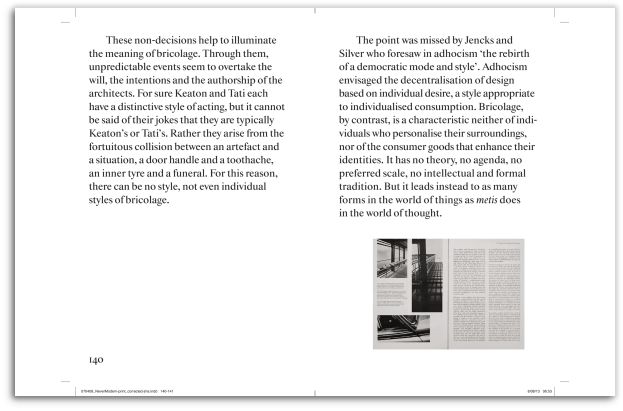Never Modern
An exploration of the role of narrative, history, appropriation and craft in the work of London based 6a Architects
GVA Gemeinsame Verlagsauslieferung Göttingen
GmbH & Co. KG
P.O. Box 2021
37010 Göttingen
Germany
+49 551 384 200 0
info@gva-verlage.de
Never Modern explores the role of narrative, history, and appropriation in the works of the London-based firm 6a Architects, whose recent projects include the South London Gallery, Raven Row, and the new fashion galleries at the Victoria and Albert Museum. It examines the unique approach of the members of 6a, wherein they avoid style and signature in favor of a pre-modern sense of metis, or “flair, wisdom, forethought, subtlety of mind, deception, resourcefulness, vigilance, opportunism, varied skills, and experience.” This analysis is accompanied by a striking visual essay of archival photographs, artworks, film stills, and recent projects by the firm. In the end, the book reveals that like contemporary society in general, the architecture of 6a Architects is fundamentally a work of bricolage, creating art composed of various objects on hand and drawing from history and the everyday to create something new and vital.
Short-listed for the CICA Bruno Zevi Book Award 2014.
“Never Modern is a significant achievement in architectural publishing, not only capturing the spirit of 6a but itself embodying a deeply welcome orientation to the concreteness of architecture, the nature of its practice and the culture of its constituents (builders, clients, designers, inhabitants, photographers, commentators, Londoners). It is an exceedingly rare example of a discourse from the heart of architecture, ever the principal embodiment of the Middle Kingdom.” Peter Carl, Architecture Today, 2013







